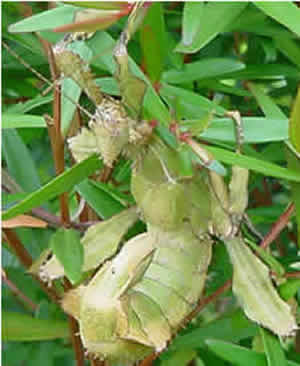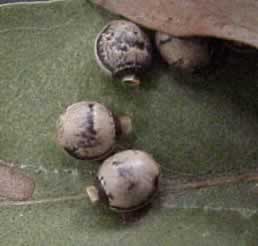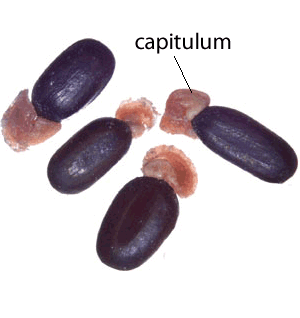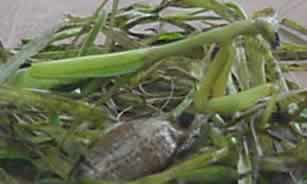An adaptation is a special characteristic that enables a plant or animal to be successful in a particular environment .
Three types of adaptations exist, structural, physiological and behavioral.
Stick insects display all three very well.
Structural adaptations are physical features that give an organism a better chance to survive in their particular environment and include:
- skin colouring and markings that camouflage the insect and make it look like a leaf or stick.
- Red wings. This is an example of flash-colouration.
- Features that make the insect look like a scorpion

Physiological Adaptation is the body's response to a specific external stimulus in order to maintain equilibrium. For example we shiver when it is cold so we can increase our body temperature.
When it come to the stick insects a good example is parthenogenesis. In the absence of males the females lay eggs that will hatch into female stick insects.
Behavioral adaptation is a way an animal acts or behaves in order to stay alive or get an advantage in reproduction due to its climate. An example of this is when a lizard moves into the shade to avoid the heat of the Sun, or during a cold morning how it stands in direct sunlight to increase its body temperature.
- A fine example of behavioral adaptation in stick insects is the ability of the insect to play dead. This is called thanatosis. Look at the video on the right.
The eggs of many species of stick insect
have an appendage known as the capitulum. The capitulum is full of carbohydrates (sugars).
The ants carry the egg down into their nest where they eat the capitulum
but leave the egg.
Ants usually vacate the nest every 6 months or so. This is beneficial as the eggs can hatch without the fear of the juvenile insects being killed by the ants
What type of adaptation is this? Explain why

There are, about, 960 species of Acacia in Australia. Acacias produce dry fruit pods that contain seeds, shown on the right, that are well adapted to the harsh Australian conditions. Each seed contains a sugar rich capsule, called the capitulum, which ants use as a food source. Acacia seeds are so well adapted to the harsh climate of the Australian outback that a greater percentage of seeds will germinate only after exposure to extreme heat.
Ants collect the Acacia seeds and store them underground in their nest. Here the seeds are safe from bushfires as are the stick insect eggs the ants collect.
Why are Acacia seeds vulnerable if they are left lying on the forest floor?
What is the incentive for ants to collect the seeds?
What is the incentive for stick insects to lay eggs that look like Acacia seeds?
Ants are very aggressive and ferociously defend their nest. Why do ants not attack
the stick insects that hatch in the nest and therefore wiping out the entire population of stick insects?

View the video on the right. It shows the adaptation clearly.
How long can stick insect eggs survive underground?
At what stage of the stick insect's life can it run?
sourced from https://www.youtube.com/watch?v=uppwVyUd5S0

Why do you think the stick insect has evolved a way to make its eggs appealing to ants?
(Think of hazards if the seed is left on the surface, especially with the frequency of bushfires in Australian forests)
One for senior science.
In evolutionary biology, convergent evolution is the process whereby organisms, not closely related, independently evolve similar traits as a result of having to adapt to similar environments or ecological niches. Explain how the acacia seed and the stick insect egg are examples of convergent evolution.
Consider the life cycle of the butterfly, shown on the right.
What type of adaptation is metamorphosis? Explain why.
Look at the pupa. Its camouflaged as a small branch. What type of adaptation is this? Explain

When threatened, the caterpillar responds as shown in the video on the right. What type of adaptation is this? Explain
The caterpillar looks like a bird dropping. What type of adaptation is this and how is this a survival advantage?
How does this offer a survival advantage?
The butterfly has wings and a proboscis, whereas the caterpillar has strong jaws and suction-cup feet. Explain why.
What type of adaptation do these features represent? Explain